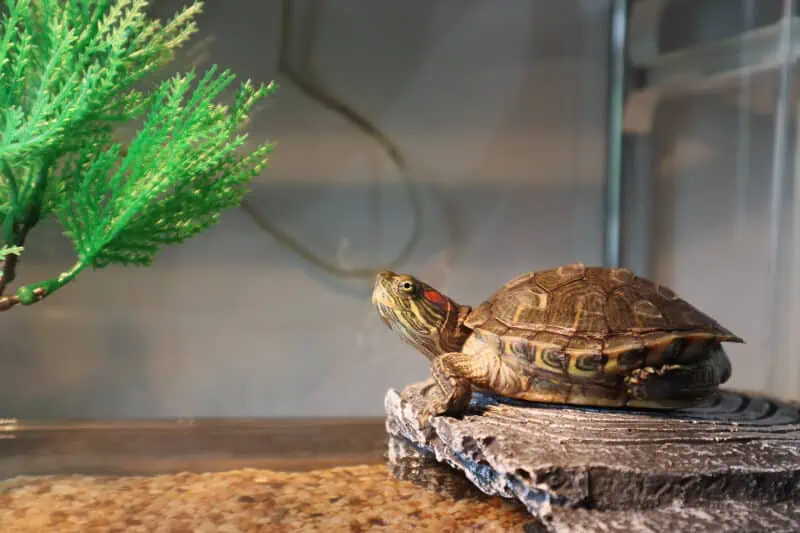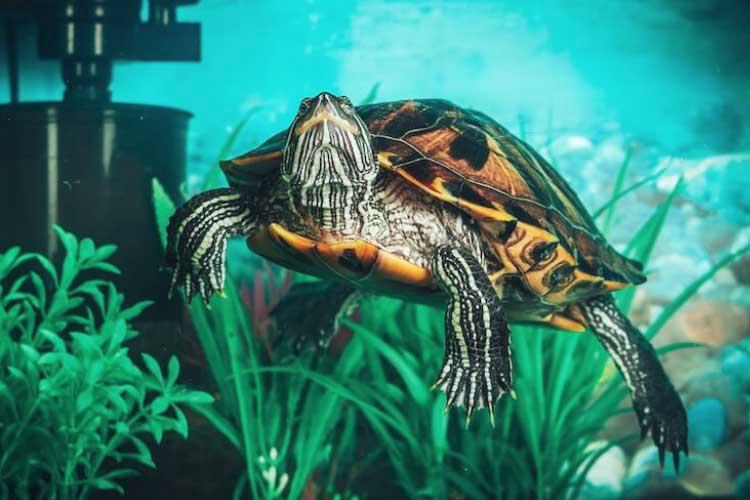If you’re a proud owner of baby turtles, you may be wondering how to create the perfect habitat for them. One crucial aspect to consider is providing natural plants for your little shelled friends to explore and hide in. This article will explore the numerous benefits of incorporating natural plants into your turtle’s habitat, from promoting their physical and mental well-being to creating a more vibrant and visually appealing environment. So, let’s dig into the advantages of giving baby turtles the opportunity to interact with nature in their own little world.
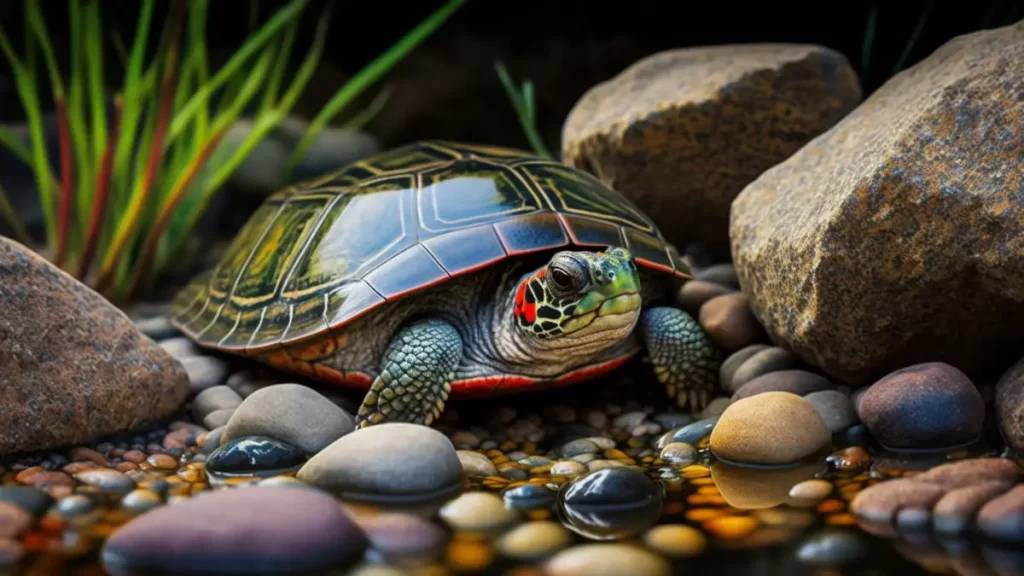
Promotes Physical and Mental Stimulation
Encourages Exercise and Activity Levels
Keeping natural plants in a turtle habitat can greatly encourage exercise and physical activity. The presence of plants allows turtles to climb, explore, and even navigate through them. This encourages them to move around and stretch their muscles, promoting physical fitness. Additionally, turtles can interact with the plants by nibbling on leaves or pushing them aside as they explore, providing mental stimulation and keeping their curious minds engaged.
Provides Opportunities for Exploration
Natural plants offer a world of exploration for baby turtles. They can investigate different textures, scents, and even taste the leaves of the plants. This sensory stimulation helps satisfy their natural curiosity and allows them to learn more about their environment. Baby turtles are naturally inclined to explore their surroundings, and having plants in their habitat provides endless opportunities for them to satisfy their need for exploration.
Enhances Problem-Solving Skills
Introducing natural plants into a turtle’s habitat can stimulate their problem-solving skills. Baby turtles will have to maneuver around the plants, finding the most efficient path to navigate through the foliage. They may need to figure out how to push aside larger leaves or climb on top of the plants to reach their desired destination. These challenges promote mental agility and problem-solving abilities, keeping their minds sharp and active.
Increases Sense of Security and Safety
Creates Hiding Places
Having plants in a baby turtle’s habitat creates natural hiding places for them. Turtles, especially when they are young, often seek shelter from potential threats or simply to rest. Natural plants provide them with hiding spots where they can retreat, finding comfort and security in the foliage. This sense of safety allows them to relax and reduces stress and anxiety levels.
Reduces Stress and Anxiety
The presence of natural plants can have a calming effect on baby turtles, reducing their stress and anxiety levels. The plants create a more natural and secure environment, replicating the turtle’s natural habitat. This sense of familiarity helps them feel safe and at ease. Consequently, reduced stress levels can have a positive impact on their overall health and well-being.
Creates a Natural Environment
Having natural plants in a turtle habitat helps create an environment that closely resembles their natural habitat. This is important for maintaining their physical and mental health. A natural environment provides essential stimuli and cues that turtles are familiar with, promoting a sense of normalcy and reducing stress. Additionally, a natural habitat allows turtles to engage in behaviors that they would exhibit in the wild, enhancing their overall well-being.
Enhances Natural Behaviors
Encourages Foraging and Hunting
In the wild, turtles spend a significant amount of time foraging and hunting for food. By incorporating natural plants into their habitat, baby turtles are provided with opportunities to exhibit these natural behaviors. They can nibble on the plants, exploring different textures and tastes. This encourages their instinct to forage and hunt, promoting a healthier appetite and overall well-being.
Promotes Basking and Resting
Turtles require a suitable place to bask and rest in order to regulate their body temperature. Natural plants can provide the perfect resting spots for baby turtles, allowing them to soak up the warmth of sunlight while enjoying the comfort of the foliage. This promotes natural basking behaviors and ensures that they have a secure and comfortable place to rest whenever needed.
Stimulates Natural Swimming Patterns
Swimming plays a crucial role in a turtle’s life, and natural plants can stimulate their natural swimming patterns. Turtles can use the plants as obstacles to navigate around, honing their swimming skills and improving their agility. The presence of plants in the water can also encourage more natural and varied swimming patterns, as turtles maneuver through the foliage. This helps keep their muscles strong and their bodies active.
Boosts Overall Health and Well-being
Improves Immune System
A healthy immune system is vital for a turtle’s overall health and well-being. By providing natural plants, baby turtles are exposed to a diverse range of microorganisms found in their environment. This exposure helps stimulate their immune system, making them more resilient to potential diseases and illnesses. A strong immune system is essential for ensuring their long-term health and vitality.
Promotes Growth and Development
The presence of natural plants in a turtle habitat promotes healthy growth and development. The plants provide essential nutrients and minerals that contribute to the turtle’s overall nutrition. They can also serve as a food source, offering natural vegetation for baby turtles to consume. These nutrients support their growing bodies, helping them develop into strong and healthy adults.
Reduces the Risk of Shell Deformities
Shell deformities are a common concern for baby turtles, and providing natural plants can help minimize this risk. The plants offer different surfaces and textures for the turtles to interact with, which can help promote proper shell development. Additionally, the hiding places created by the plants can protect baby turtles from potential injuries or deformities. By offering a more diverse environment, the risk of shell deformities is greatly reduced.
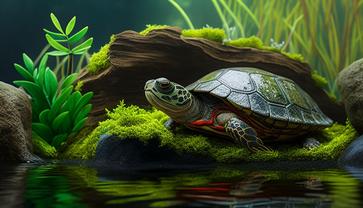
Provides Visual and Esthetic Appeal
Adds Natural Beauty to the Habitat
Natural plants add a touch of natural beauty to a turtle’s habitat. The various shades of green, the textures of the leaves, and the presence of flowers or fruits can create a visually appealing environment. This not only pleases the eyes of the viewer but also provides a more aesthetically pleasing habitat for the turtles themselves.
Creates a More Enjoyable Viewing Experience
For turtle owners, observing their pets in a beautiful and naturalistic habitat can be a source of joy and fulfillment. The presence of natural plants enhances the viewing experience by creating a more visually dynamic and engaging environment. The turtles’ interactions with the plants, such as climbing or resting on them, add an element of interest and excitement to the viewing experience.
Enhances the Aesthetic Appeal of the Enclosure
A turtle enclosure with natural plants can be transformed into a visually stunning and captivating display. The plants can be arranged to create different levels and layers, providing a more visually dynamic and interesting landscape. This not only enhances the overall aesthetic appeal of the enclosure but also creates a more natural and inviting space for the turtles to inhabit.
Improves Water Quality
Acts as Natural Filtration System
Natural plants play a crucial role in maintaining water quality in a turtle habitat. They act as natural filters, absorbing excess nutrients and waste products from the water. This helps keep the water clean and free from harmful substances that can negatively impact a turtle’s health. By incorporating plants into the aquatic environment, a healthier and more balanced ecosystem can be maintained.
Reduces Ammonia and Nitrate Levels
Ammonia and nitrate are substances that can accumulate in turtle habitats and pose a threat to their health. Natural plants can help reduce the levels of ammonia and nitrate by absorbing these compounds as a source of nutrition. By doing so, plants can significantly contribute to maintaining good water quality, minimizing the risk of waterborne illnesses and promoting a healthier habitat for the turtles.
Provides Oxygen for Aquatic Life
Oxygen is essential for the well-being of aquatic life, including turtles. By performing photosynthesis, natural plants release oxygen into the water. This helps sustain the turtles and other aquatic organisms by ensuring an adequate supply of oxygen. Introducing natural plants into a turtle’s habitat helps create a more balanced and oxygen-rich environment, supporting the overall health of the inhabitants.
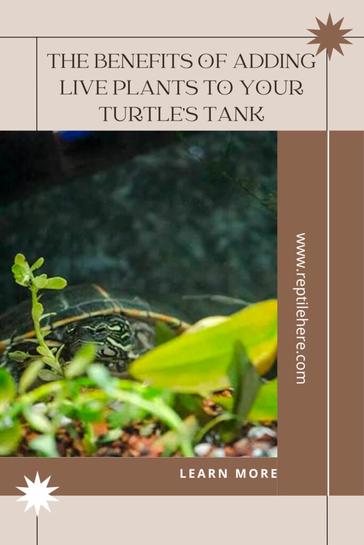
Encourages Natural Behaviors and Instincts
Promotes Climbing and Roaming
Turtles are naturally inclined to climb and roam in search of food or suitable basking spots. Natural plants offer the perfect opportunity for baby turtles to engage in these behaviors. They can climb on the plants, exploring different heights, or use them as stepping stones, mimicking the experience of navigating through their natural environment. By promoting these natural behaviors, turtles can maintain their physical and mental well-being.
Allows Territorial Marking and Scent Trailing
Turtles have a natural instinct to mark their territories and communicate through scent trailing. Natural plants provide excellent surfaces for turtles to rub against, helping them mark their territory and leave their scent for other turtles to recognize. This behavior is important for maintaining social hierarchies and communication among turtles and contributes to their overall mental and emotional well-being.
Enhances Natural Reproductive Behaviors
For many species of turtles, the presence of natural plants can promote and enhance their natural reproductive behaviors. Certain plants can act as breeding grounds or provide nesting sites for turtles. By creating a suitable environment with natural plants, baby turtles can engage in their natural reproductive behaviors, ensuring the continuation of their species and promoting their overall well-being.
Reduces Boredom and Stereotypical Behaviors
Prevents Excessive Pacing and Swimming in Circles
Boredom and stereotypical behaviors can be detrimental to a turtle’s well-being. The presence of natural plants provides stimulation and prevents turtles from engaging in repetitive and potentially harmful behaviors, such as excessive pacing or swimming in circles. The plants offer new sights, scents, and textures, keeping the turtles mentally engaged and reducing the likelihood of boredom-related behaviors.
Minimizes Self-harming Behaviors
Turtles may exhibit self-harming behaviors, such as biting or scratching themselves, when they are stressed or bored. The inclusion of natural plants in their habitat can help minimize such behaviors by providing distractions and mental stimulation. By keeping their minds occupied with exploring and interacting with the plants, baby turtles are less likely to engage in harmful behaviors that could jeopardize their health.
Creates a More Stimulating Environment
Having natural plants in a turtle habitat creates a more stimulating environment overall. The different elements and textures of the plants provide sensory stimulation for the turtles, engaging their senses and promoting a more enriching day-to-day experience. A stimulating environment is essential for a turtle’s overall well-being, as it keeps their minds engaged and helps prevent boredom-related health problems.
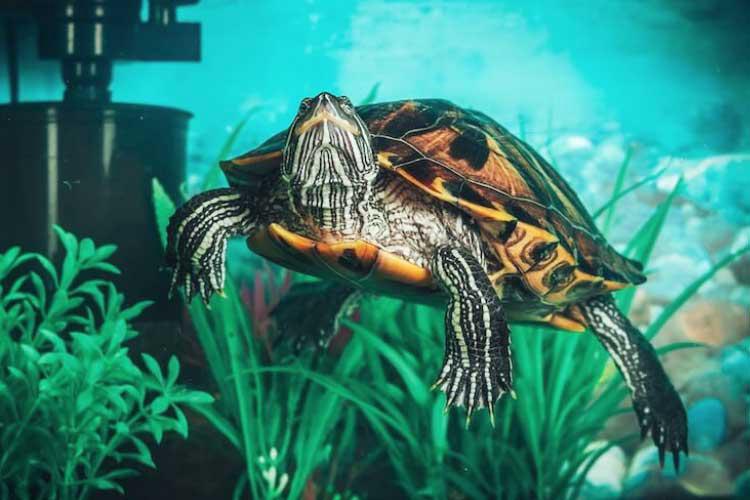
Provides Environmental Enrichment
Encourages Interaction with Other Tank Mates
Having natural plants in a turtle habitat promotes interaction between turtles and their tank mates. The plants provide hiding places and resting spots for other aquatic animals, attracting a diverse range of species. This creates a more biologically rich and diverse habitat, allowing turtles to observe and interact with other animals. Such interactions contribute to a more fulfilling and enriching environment for the turtles.
Offers Opportunities for Sunlight Exposure
Natural plants in a turtle habitat can serve as a shade provider, allowing turtles to bask under the warm rays of the sun. The presence of plants creates areas of shade, allowing turtles to regulate their body temperature more effectively and bask comfortably. This exposure to sunlight is crucial for their overall health and well-being, as it helps in the synthesis of vitamin D and promotes optimal metabolic function.
Creates a Biologically Rich and Diverse Habitat
A habitat with natural plants offers a more biologically rich and diverse environment for turtles. The plants attract various insects and other smaller organisms, which turtles may naturally interact with. This diversity in the habitat’s ecosystem provides turtles with opportunities for foraging, hunting, and engaging in natural behaviors. A biologically rich habitat contributes to their overall well-being and promotes a more authentic and natural existence.
Easy and Affordable to Implement
Readily Available in Local Nurseries or Online
Natural plants for turtle habitats are readily available in local nurseries or online stores. Numerous species of low-light and aquatic plants can be found, suited for different turtle species and habitat requirements. With a little research, turtle owners can find the right plants for their specific needs and preferences, making it easy to incorporate natural plants into their turtle’s environment.
Does Not Require Costly Equipment or Maintenance
Unlike some other forms of environmental enrichment, such as elaborate structures or complex habitat setups, incorporating natural plants into a turtle habitat does not require costly equipment or maintenance. The plants can be easily placed in the enclosure, and basic care instructions can be followed to ensure their longevity. This makes it an affordable and low-maintenance option for enhancing the turtle’s habitat.
Suitable for All Turtle Species
Natural plants can be incorporated into the habitats of all turtle species, making it a versatile option for turtle owners. Whether you have a land-dwelling or aquatic turtle, there are suitable plants available that can thrive in their specific environment. This versatility allows turtle owners to enhance their turtle’s habitat regardless of the species they own, providing the same benefits to all turtles.
